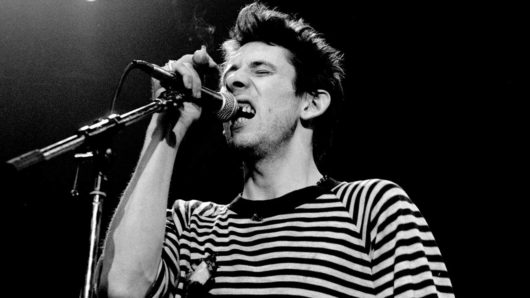If there were ever any doubts over the impact that Purple Rain would have on the world, they were all cast aside when the movie premiered, at Grauman’s Chinese Theatre, in Hollywood, Los Angeles, on 26 July 1984. As Prince’s limo pulled up to the venue, Hollywood Boulevard was festooned with images of the star, either being waved by fans queuing up to catch a glimpse of their idol, or staring down from the ornate façade of the building itself. “It looked like Hollywood was laying for Prince,” Revolution bassist Mark Brown told Minneapolis music historian Andrea Swensson, for the book Prince And Purple Rain: 40 Years. “I just didn’t realise the level of success that we had achieved up to that point.” As these Purple Rain movie facts show, the success of the film – and it’s attendant soundtrack album – can still be felt to this day, setting the bar for all who have followed in its wake.
Listen to the ‘Purple Rain’ soundtrack album here.
The 10 ‘Purple Rain’ Movie Facts You Need To Know
1: ‘Purple Rain’ was only semi-autobiographical
Prince had been making notes on what would become Purple Rain as far back as 1982, when he began touring the 1999 album. Carrying a notebook with him at all times, he sketched out a narrative that drew heavily on his experiences growing up in Minneapolis, where local bands such as Flyte Time, The Family and Prince’s own group, Grand Central, battled for supremacy on the local gig circuit. Prince’s handwritten notes detailed that his first feature film would be “the story of the dreams and aspirations of 3 individuals”: Prince (whose character would later be renamed The Kid); Morris Day, his rival and frontman of protégé act The Time; and Vanity, then heading up an all-female side-project group, Vanity 6.
- Best Prince Songs: 35 Royal Classics From The Purple Reign
- Best Prince Albums: The Studio Discography, Ranked And Reviewed
- Best Prince Videos: 25 Classics That Got The Look
Vanity would soon be replaced by Apollonia, and her group rechristened Apollonia 6, before Purple Rain began shooting. By that time, an initial script, titled Dreams and written by TV screenwriter William Blinn, had been passed over in favour of a new script by director Albert Magnoli, who eventually named the project after the Purple Rain song itself. Magnoli’s vision for the film had so impressed Prince during their first meeting together that the musician told him: “You’ve only known me for ten minutes, yet you tell me basically my story. How is that possible?”
A year after the film’s release, Prince would downplay the autobiographical nature of Purple Rain, telling Rolling Stone writer Neal Karlan, “That stuff about my dad was part of Al Magnoli’s story. We used parts of my past and present to make the story pop more, but it was a story.”




